Veloster attracts new attention to Hyundai
By John Gilbert
My co-driver in the passenger seat said, “Look at that guy.†I couldn’t look, being occupied in the left lane, dodging celebratory lane-swervers heading north on Interstate 5, on the way from Eugene to Portland, Oregon. My co-driver filled me in: “He’s driving that SUV, and he just pulled out his cell phone to take a picture of this car.â€
We were driving a 2012 Hyundai Veloster, an unusual car covered with grooves and contours that make it a unique expression of a sports coupe. Our day had been consumed by driving down I-5, from Portland to Eugene, where we did a little tailgating and watched the University of Oregon overrun Nevada 69-20 in a college football blowout. On the way down, I had plugged in my iPod and tuned it to Greg Brown’s Iowa folksy songs, singling out “Eugene,†his rambling travelogue about places he likes to visit all across the country, with Eugene, Ore., among them.
My partner enjoyed that song so much he asked me to play it again on our return trip late that Saturday afternoon.
The occasion for all this was the introduction of the 2012 Veloster, and it was combined to give us access to nightly live music at the Northwest Music Fest being held at dozens of venues throughout Portland, as well the 2-hour drive to the football game, one day after we had driven to the Columbia River Gorge. Hyundai could have sold a half dozen Velosters on our Gorge trip, when we arrived as a posse of more than a dozen multi-colored Velosters stopping at the Vista House on Crown Point, looking down on the scenery, while we were promptly surrounded. Read more
2012 Edge, Explorer get EcoBoosted
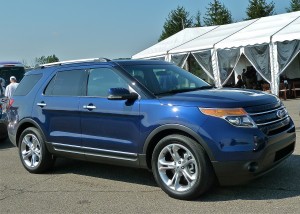
The Explorer, restyled for 2011, adds 240 horsepower and 270 foot-pounds of torque with the EcoBoost 4.
By John Gilbert
DETROIT, MI. — Who could have foreseen that the new and elongated Ford Explorer, and the smaller but roomy crossover Edge, could outperform larger V6 or V8 engines for power as well as at the gas pumps?
Ford Motor Company has unveiled its 2.0-liter 4-cylinder EcoBoost engines for 2012 in both the Explorer and Edge, and driving them shows why Ford is gambling its future on EcoBoost engines. They combine direct injection with turbocharging to produce the power of larger displacement engines with more cylinders, while easily getting significantly better fuel economy than those larger engines.
The power of the EcoBoost V6 has been impressive in the Taurus sedan and the Flex wagon, although its success in V8-traditional F-150 pickup trucks has even surprised Ford executives. Now that the 3.5-liter EcoBoost V6 is outperforming V8s, it’s time to move to Phase 2 and prove that the EcoBoost application to the 4-cylinder can be at least as effective in the Edge and Explorer.
The 4-cylinder in question is one that has been refined numerous times by Ford since first being born at the hand of Mazda’s engine designers in the days when Ford and Mazda cross-swapped engines. Reinforcing the interior componentry of the 2.0-liter 4 to prepare it for more and more sudden bursts of RPMs makes the EcoBoost perform with remarkable power. It develops 240 horsepower and 270 foot-pounds of torque — impressive numbers, for certain. In the process, Edge delivers 30 miles per gallon for a highway estimate, and the Explorer shows 28.  That reinforces Ford’s announcement that by the 2013 model year, 90 percent of all Ford vehicles will have EcoBoost engines available.
It’s not as though the Edge and Explorer needed a boost, so to speak. Since the U.S. economy has battled to regain momentum from our economic struggles, sport-utility vehicles have regained their own momentum, although the swing has been definite to smaller crossovers from the previous popularity of large, truck-based — and gas-guzzling — SUVs. The Edge is the perfect new-age SUV, and recorded sales records for the month of July, while the Explorer, stretched to house three rows of seats and totally restyled on a car platform instead of the truck base previously used, sold more in July than all of last year.
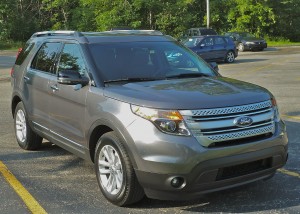
Explorer has been a hot seller, and added power and fuel economy should make the EcoBoost version even hotter.
Amy Marentic, Ford’s group marketing manager, said that Ford’s market research showed 35 percent of Explorer buyers said that fuel economy was the primary reason they chose Explorer. The new Explorer’s 28 EPA highway fuel economy estimate is 40 percent better than its predecessor, the 4.0-liter V6 originally built in Cologne, Germany.
Frank Davis, back from a term working for Ford in Europe, is the new executive director of North American Engineering, and he explained Ford’s basic philosophy that electric vehicles, including hybrids, may well be the future of Ford powerplants, but for right now and the foreseeable future, EcoBoost technology is the best way to improve fuel economy while providing satisfactory power.
It takes power for six cylinders to do the work of eight, and four cylinders to do the work of six, and the turbocharging takes care of the power.
If there was any chance of Ford wavering, the F-150 solidified the theory. Ford officials were concerned that full-size pickup buyers might be reluctant to give up their V8 engines, but when customers realized the EcoBoost V6 had more torque, more pulling power, and could out-drag-race the same vehicle with a V8, they went for the EcoBoost in surprising numbers — 41 percent of all F150s are EcoBoosts, and with price conscious F150 buyers going for the base F150 with the 3.7 V6, for the first time since 1985, V6 pickups are outselling their V8 brethren.
The next step in Ford’s plan to expand the reduced-cylinder/diminished-displacement turbocharged concept was to develop and unveil the 2.0-liter 4-cylinder EcoBoost. Maybe someday that engine will be a major screamer in everything from a Fusion to a Focus or Fiesta, but first it has to become a proven real-world workhorse, and the best way to prove that is in the Explorer and Edge. Read more
Revised 2012 VWs expand models, power
By John Gilbert
Have you ever experienced an earthquake? In late August, I was right up close and personal with the epicenter of the 5.8-level earthquake that struck in Virginia, and caused tremors all the up the East Coast to Washington, D.C., New York City, and up to New Hampshire.
When I mentioned that to a fellow back in Minnesota, he was horrified and said how lucky I was to have lived through it. Then I had to explain that I actually didn’t feel a thing. I was shielded from any awareness of the upheaval by the refinements of a 2012 Volkswagen Jetta GLI. We tend to remember all the details of where we were when such important events happen at the same time, and at the same time, it seems as though you might have been cheated out of a memorable experience if you can’t regale friends with details about the earth tilting, lamps swaying, trees falling down, etc.
But there I was, driving a Jetta GLI on a rural highway in a rural part of the state of Virginia. The car is new for 2012, with upgraded suspension, appearance items, interior features, and engine power. It responded perfectly to all my inputs of acceleration, shifting, sweeping around tight curves, and stopping with precision. When I returned from the test loop to the Breaux Winery, where the full collection of 2012 VW vehicles had been gathered, someone breathlessly asked: “Did you feel it?â€
“Feel what?†I responded. I’m not one to seek out natural disasters, but I’m also not about to pass up witnessing one if it happens and I can be a safe distance away. This earthquake epicenter was Richmond, Va., less than 50 miles away from where we were. People at the winery felt the earth move, and I later saw video of offices and apartments where things fell off shelves and bookcases tipped over. I suggested to a Volkswagen PR type that his staff might have capitalized by saying it wasn’t an earthquake, just the ground shaking from all the torque produced by the VW fleet of turbo-diesels. Or, as in my case, I could visualize a commercial where the earth is opening into gaping crevasses, and buildings are toppling, but someone in a Jetta GLI (or Passat, CC, or Routan, Tiguan, Golf, Beetle, or Touareg) cruises blissfully past, listening to the new Fender-by-Panasonic audio surround system and feeling nothing because of the slick suspension and improved silence of VW’s modern interior noise reduction.
Volkswagen, however, is more pragmatic than that. Jonathan Browning, president and CEO of Volkswagen Group of America, explained that VW had lost market share in the U.S. from the 1990s, and has aggressive plans to recapture that, and more. Much more. VW wants to become the largest automaker in the world, and, judging by the strength of its full line, it has a realistic chance to achieve that in the not too distant future.
“As we go forward, we have a very clear vision where we want to go,†said Browning. “We want to be leading in quality, we want to be the top employer, we want to improve to 8 percent market share, and we want to be first in customer satisfaction.â€
There are several keys to VW’s optimism for 2012. First is its deep commitment to U.S. sales, having just opened a new plant in Chattanooga, Tenn., where the new Passat is being built. Restructuring the full line should help, too. The Jetta and Passat both drop directly into the compact and midsize categories. The Jetta is a strong alternative to the Civic, Corolla, Focus, Mazda3, Sentra mainstays, and moves up smartly with the added GLI. The Passat, with its superior room and features, becomes a worthy candidate for Accord-Camry-Altima-Malibu-Fusion-Sonata buyers.
Redesigning the Beetle by lowering its roof and changing the classic shape from a symmetric bubble to more of a sportier stance, should give it new life, as well. Similarly, the Golf remains a solid hatchback subcompact, and while it still has the potent GTI model for strong performance, it also adds the Golf R, which will run away and hide from a GTI.
The most impressive thing about the VW fleet is under the hood. I’m not a big fan of the 2.5-liter 5-cylinder engine, but it is strong and smooth and develops a lot of torque. I am a fan of the 2.0-liter 4-cylinder — particularly the Audi-sourced 2.0 with direct-injection and turbocharging — which can be tuned for normal running from sporty performance to all-out power, with the only drawback being the need for premium fuel to run its best.
And I am overwhelmed by VW’s 2.0-liter TDI — the VW developed turbo-diesel that combines impressive torque with fantastic fuel mileage figures, and is available in many VW models from top to bottom. The larger 3.6-liter VR6 has been refined to produce maximum power and it has proved to also provide surprisingly good fuel economy. At the top of the list is the 3.0-liter V6 TDI, another Audi turbo-diesel, which can be obtained in the Touareg, VW’s larger and hardier SUV. Read more
New Wrangler both smooth and rugged
By John Gilbert
The transformation of all the new Chrysler Brand vehicles under Fiat ownership has been both subtle and startling. New styling flair to the interiors on everything from Dodge and Chrysler minivans to sedans and to sporty cars is evident, and for 2012, Fiat’s fine hand is reaching down for arguably its greatest achievement. The rugged Jeep Wrangler , which has been a rock-climbing dynamo since it originated for use in World War II, retains that status, but  for 2012, it has magically become a smooth and impressive performer on the road, too.
How ironic that it took an Italian company to convince Jeep engineers that World War II has, indeed, ended.
Back in 1940, Willys-Overland won the bid to build the first military Jeeps for the U.S. Army, and while it was sturdy and totally efficient enough to serve as the military’s rugged “sports car†alongside the tanks and troop trucks, it also was properly primitive, and clearly was for work, not comfort.
Almost an emblem of the Jeep’s simple features was a small strap, tethered to the lower frame inside the doorjamb, and looping around a small vertical bar on the lower door. The door could be thrown open, but that strap prevented it from opening too far.
Jeep migrated through owners, including American Motors, and finally Chrysler Corporation over the next 70 years, and much of its charm was that it stayed primitive and efficient, and if the off-road-tuned suspension harshness wasn’t convincing enough, there was always that little strap remaining in place, upgraded to tightly braided ballistic nylon cord in more modern times, and reminding its owners that it still remained true to its World War II heritage.
Other Jeep vehicles came out, modernized to the times, such as the Cherokee, Compass, Liberty, and the Patriot, and while they were softened to various degrees of on-road demands, the Wrangler stayed rugged and purpose-built, and, well…primitive. The Wrangler models did take a major step forward in interior design and connectivity features for the 2011 model year, when new owner Fiat gave all Chrysler Brand products a thorough and pleasant makeover.
The primary feature of Wranglers continued on the 2011 models, however, with their no-nonsense, off-road ruggedness, free of fancy features, which also meant they were pretty free of anything resembling on-road comfort as well. Wranglers remained at home climbing rock walls, but their unyielding suspension rigidity also meant that actually driving home on real roads was a lot like taking a 10-mile cruise on a pogo stick.
The transformation takes a giant step on the 2012 Wranglers, introduced to the automotive media in Portland, Ore., in August. Still unmatched off the road, the new Wrangler is remarkably smooth and composed on the roads, too. Read more
Genesis adds potent new V8 in R Spec
By John Gilbert
Late in 2008, Hyundai took the automobile industry by surprise with the introduction of the Genesis, which was the South Korean company’s first attempt at anything other than an economy car.
The Genesis, an “entry luxury†sedan with strong performance, was a rousing success. It  won the 2009 North American Car of the Year award in its debut, and its high-tech, dual-overhead-camshaft 4.6-liter V8 was named one of the 10 best engines in the world by Ward’s.
In the ensuing two years, Hyundai has scaled some major peaks, with its record-setting midsize Sonata — which was the largest-selling car in the U.S. for the month of May — and for everything from its crossover SUVs to its compact Elantra and subcompact Accent, to say nothing of its all-out luxury Equus.
Genesis has spent 24 consecutive months setting records for year-over-year monthly sales increases. So it hardly seems there is any need for a revision. But for 2012, Hyundai has decided to show off its elevated standard for technology with a renewed Genesis, aiming squarely at the top BMW 5-Series, Mercedes E-Class, Infiniti M, and Lexus GS models. Exterior changes are subtle, minimal even. But under the hood, where the first Genesis offered a base 3.8-liter V6 or the award-winning 4.6-liter V8, there now are a trio of engines that should satisfy every type of buyer.
First, the base 3.8 V6 has been upgraded to a direct-injection version that is significantly improved, plus the 4.6 has been updated as well, although it has not been fitted with direct injection..
The prize, however, is an entirely new and mind-blowing direct-injection 5.0-liter V8, with 429 horsepower and 376 foot-pounds of torque, and a Hyundai-built 8-speed automatic transmission. Designed to power the larger super-luxury Equus, it also comes in the Genesis R Spec, which adds firmed up suspension, more high-performing steering, and asymmetric exhaust tailpipes — features befitting a luxury-sports sedan that will rocket from 0-60 in 5 seconds.
Driving the R Spec at the car’s introduction in the mountains just outside Las Vegas was a kick, because the car is so responsive. The Tau engine family, which includes the 4.6, showed off its new big 5.9 brother, and it comes with a high-pressure fuel pump to dish out 2,175 pounds per square inch of pressure in Hyundai’s direct-injection system. The tuned intake has electronic timing control, and the roller timing chain and camshaft carrier improve endurance while reducing friction. Read more


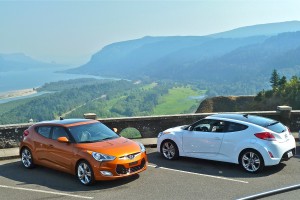
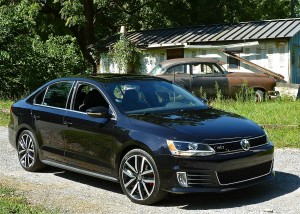
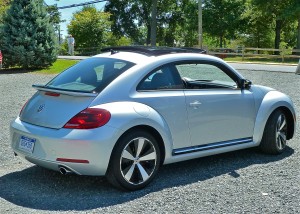
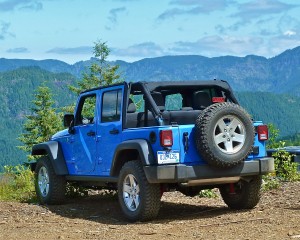

 John Gilbert is a lifetime Minnesotan and career journalist, specializing in cars and sports during and since spending 30 years at the Minneapolis Tribune, now the Star Tribune. More recently, he has continued translating the high-tech world of autos and sharing his passionate insights as a freelance writer/photographer/broadcaster. A member of the prestigious North American Car and Truck of the Year jury since 1993. John can be heard Monday-Friday from 9-11am on 610 KDAL(www.kdal610.com) on the "John Gilbert Show," and writes a column in the Duluth Reader.
John Gilbert is a lifetime Minnesotan and career journalist, specializing in cars and sports during and since spending 30 years at the Minneapolis Tribune, now the Star Tribune. More recently, he has continued translating the high-tech world of autos and sharing his passionate insights as a freelance writer/photographer/broadcaster. A member of the prestigious North American Car and Truck of the Year jury since 1993. John can be heard Monday-Friday from 9-11am on 610 KDAL(www.kdal610.com) on the "John Gilbert Show," and writes a column in the Duluth Reader.